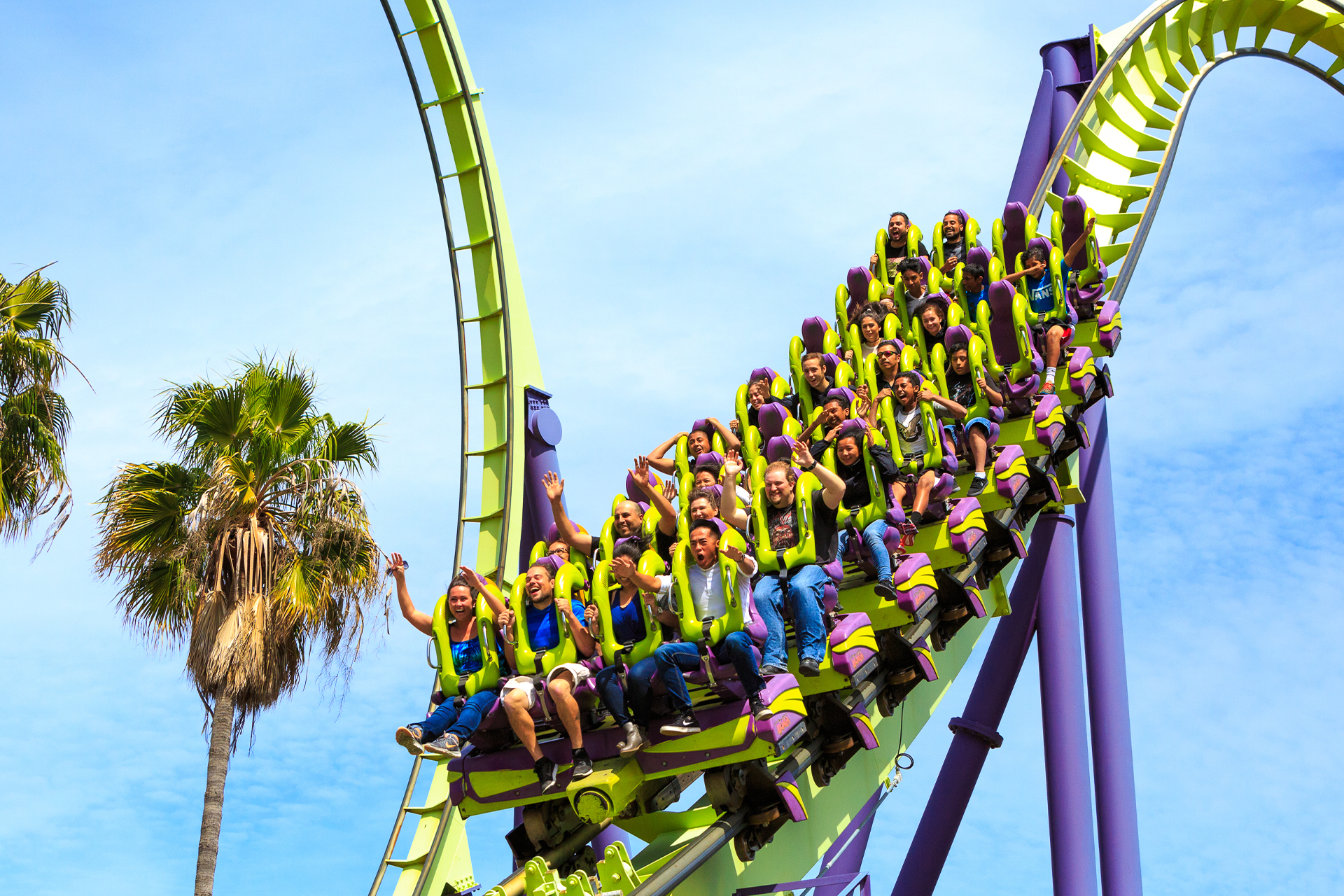
Leverage OTT and CTV advertising on video streaming platforms. Track advanced metrics to grow viewer engagement and ROI across connected devices with the help of intelligent data analytics platforms
OTT (over-the-top) and CTV (connected TV) are dominating the streaming landscape, revolutionizing media consumption. Advertisers now have unprecedented opportunities to connect with their target audience through personalized ads that are measurable across platforms.
In this article, we explore how OTT and CTV analytics maximize viewer engagement and ROI by understanding audience behavior, preferences, and feedback and deep dive into key insights and trends in OTT and CTV consumption based on reports. We'll also discuss implications and opportunities for marketers and content creators aiming to reach and retain audiences on these platforms.
OTT and CTV analytics provide valuable insights into viewer behavior. Real-time data reveals how content resonates, enabling informed decision-making. Metrics like completion rates, click-through rates, and conversions offer a comprehensive view for optimizing strategies and creative executions.
Personalization is a game-changer. Analyzing viewer preferences and behavior allows for hyper-relevant ads. Tailored content not only enhances satisfaction but also drives higher engagement and conversions.
Personalize your marketing strategies like never before. Experience the power of Attentity's identity resolution services.
Analyzing data across devices and platforms offers a holistic understanding of viewer behavior. Advertisers optimize campaigns for consistent experiences, regardless of the viewer's screen or device.
Integrating advanced OTT and CTV analytics empowers data-driven decisions, maximizing viewer engagement and ROI. Understanding audience behavior allows for precise campaign tailoring. Embracing these analytics ensures captivated audiences and redefines digital advertising possibilities.
Understanding User Behavior: Analyzing Content Consumption Patterns on OTT and CTV
OTT and CTV deliver video content over the Internet without cable or satellite. Platforms like Netflix, Hulu, and Disney+ stream on devices such as smartphones, tablets, laptops, and smart TVs. CTV devices like Roku, Amazon Fire TV, and Apple TV connect to or are embedded in TVs, giving users access to OTT streaming apps.
Understanding consumer preferences, behaviors, and patterns in OTT and CTV viewing is crucial for marketers and content creators. This data helps create personalized experiences.
OTT and CTV Content Consumption Patterns: Key Insights and Trends
US OTT and CTV viewership is surging: In 2020, the number of US OTT video users increased by 8.8% to reach 232.1 million, as per eMarketer. US CTV users also grew by 17.2% to reach 204.1 million. This growth trend is expected to continue as more consumers embrace OTT and CTV services for entertainment.
OTT and CTV viewers represent a diverse and fragmented audience: They have different demographics, preferences, behaviors, and motivations. Younger viewers (18–34) tend to prefer OTT content, while older viewers (50+) lean more towards CTV content. Additionally, viewers use various devices, platforms, and apps to access video content, posing challenges for marketers and content creators.
OTT and CTV viewers are highly engaged and loyal: They spend significant time watching online video content, often binge-watching favorite shows. In Q1 2021, the average viewing time per session on OTT platforms increased by 44% to 28 minutes. On CTV devices, it rose by 55% to 36 minutes. Moreover, viewers tend to stick with their preferred platforms and apps, displaying high retention and low churn rates.
Reviews and recommendations have an impact on OTT and CTV viewers: They heavily rely on recommendations from friends, family, streaming services, and online reviews or ratings. These sources play a crucial role in discovering new content online.
Leveraging Advanced OTT and CTV Analytics for Enhanced Viewer Engagement
One key advantage of OTT and CTV is the ability to gather and analyze valuable viewer data. This data helps content providers optimize their strategies, personalize offerings, and boost retention.
Advertisers can also target their ads effectively, measure impact, and maximize ROI. For consumers, it means discovering new content, enjoying better viewing experiences, and getting more value from subscriptions. However, harnessing advanced OTT and CTV analytics is no easy task. It requires a robust data infrastructure, a comprehensive strategy, and a skilled data team. Common challenges include:
Data fragmentation: Integrating and harmonizing data from multiple sources is complex and costly.
Data quality: Ensuring data completeness, accuracy, and consistency can be time-consuming and resource-intensive.
Data privacy: Protecting sensitive viewer information from unauthorized access is crucial for compliance and ethical standards.
Data analysis: Analyzing vast and diverse data volumes requires advanced tools like AI, ML, and NLP, along with domain expertise, to derive actionable insights.
- Data fragmentation: Integrating and harmonizing data from multiple sources is complex and costly.
- Data quality: Ensuring data completeness, accuracy, and consistency can be time-consuming and resource-intensive.
- Data privacy: Protecting sensitive viewer information from unauthorized access is crucial for compliance and ethical standards.
- Data analysis: Analyzing vast and diverse data volumes requires advanced tools like AI, ML, and NLP, along with domain expertise, to derive actionable insights.
To overcome these challenges and enhance viewer engagement, content providers and advertisers must partner with a reliable data solutions provider. Such a partner can help:
- Collect and integrate data from various sources using APIs, SDKs, or webhooks
- Cleanse and validate data through automated processes and quality checks
- Secure and store data using encryption, authentication, and cloud services
- Analyze and visualize data through dashboards, reports, or custom applications
- Apply AI, ML, and NLP models to generate insights on viewer behavior, preferences, engagement, and more
- Implement data-driven strategies to optimize content production, distribution, monetization, personalization, and recommendation
- Evaluate campaign effectiveness using metrics like reach, frequency, impressions, views, completion rate, CTR, CVR, CPM, CPA, etc.
By leveraging advanced OTT and CTV analytics, content providers and advertisers gain a competitive edge in this dynamic market. They can deliver more relevant, diverse, and engaging content across devices and platforms, ultimately providing greater value to their viewers.
Targeting the Right Audience: Cross-Device Tracking and Effective Segmentation
In today's digital world, effective marketing requires tracking consumer behavior across multiple devices and platforms. Cross-device tracking and effective segmentation help achieve this. Cross-device tracking identifies and links users across devices using methods like cookies, device IDs, or email addresses. Effective segmentation divides the audience based on cross-device behavior, such as demographics or interests.
Combining cross-device tracking and segmentation provides a comprehensive view of the audience, delivering personalized experiences. The benefits include increased conversion rates, reduced ad waste, enhanced loyalty and retention, and gaining a competitive advantage.
To implement cross-device tracking and effective segmentation for their marketing campaigns, individuals or businesses should leverage robust tools that track user behavior across devices and platforms. They should use unique identifiers to track activities and gain insights. The audience should be segmented based on demographics, interests, or purchase history.
Personalized messages and offers should be delivered to enhance the user experience and increase conversions. It is important to comply with privacy regulations and obtain consent. These strategies help gain valuable insights into audience behavior and drive exceptional campaign results.
Data-Driven ROI Optimization: Harnessing Analytics for Connected Devices
Businesses must leverage data and analytics to optimize their return on investment (ROI) and establish a prominent position in the market. This is especially vital for businesses that rely on connected devices like smart sensors, wearables, or IoT devices to collect and transmit data.
Connected devices generate vast amounts of valuable data, offering insights into customer behavior, product performance, operational efficiency, and more. However, simply collecting and analyzing this data is insufficient. To excel, businesses must utilize the data to make informed decisions that enhance their ROI and deliver exceptional value to their customers.
A powerful approach to achieving this is through data-driven ROI optimization. This entails leveraging data and analytics to identify and prioritize the most lucrative actions and outcomes for a business. Data-driven ROI optimization offers several benefits, enabling businesses to:
Boost revenue: Identify new opportunities, cultivate customer loyalty, and tailor offers and recommendations.
Trim costs: Optimize resource allocation, enhance operational efficiency, and prevent failures and downtime.
Mitigate risks: Detect and resolve issues, ensure compliance, and fortify security and privacy.
To embark on the path of data-driven ROI optimization, businesses must possess a clear vision of their goals and objectives. Additionally, they require a robust data and analytics strategy that encompasses the following key aspects:
Data collection: Gather relevant and reliable data from connected devices as well as other sources like customer feedback, market research, or third-party data providers.
Data integration: Seamlessly integrate and harmonize data from various sources and formats, ensuring high data quality and consistency.
Data analysis: Apply advanced analytics techniques, such as descriptive, predictive, prescriptive, or cognitive analytics, to extract meaningful insights from the data.
Data visualization: Present insights in a compelling and accessible manner, utilizing dashboards, reports, or interactive tools that facilitate data exploration and discovery.
Data action: Act upon the insights by implementing changes or improvements that optimize ROI and generate value for customers.
It is crucial to note that data-driven ROI optimization is an ongoing process that necessitates continuous monitoring and adjustment to maintain its effectiveness.
From Metrics to Action: Measuring Ad Performance and Driving Video Streaming ROI
Video streaming is one of the fastest-growing and most competitive industries in the world. With millions of viewers and thousands of content providers, video streaming platforms need to find ways to attract and retain customers while also generating revenue from advertising.
One of the key challenges for video streaming platforms is to measure the effectiveness of their ads and optimize their ad strategies. How can they ensure that their ads are reaching the right audience at the right time with the right message? How can they balance the trade-off between ad frequency and user experience? How can they increase their return on investment (ROI) from advertising?
Metrics for Measuring Ad Performance
There are many metrics that can be used to measure the performance of video ads, but some of the most common ones are:
Impressions: The number of times an ad is displayed to a user.
Reach: The number of unique users who see an ad.
Frequency: The average number of times a user sees an ad.
Click-through rate (CTR): The percentage of users who click on an ad after seeing it.
View-through rate (VTR): The percentage of users who watch an ad until the end or for a certain duration.
Cost per mile (CPM): The sum of money that an advertiser pays for each 1,000 impressions of an advertisement.
Cost per click (CPC): The amount of money paid by an advertiser for every click on an ad.
Cost per view (CPV): The amount of money paid by an advertiser for every view of an ad.
Conversion rate (CR): The percentage of users who take a desired action after seeing or clicking on an ad, such as signing up, subscribing, or purchasing.
Return on ad spend (ROAS): The proportion of an ad campaign's revenue to its cost of operation.
These metrics can help video streaming platforms understand how well their ads are performing in terms of reach, engagement, and conversion. They can also help them compare different ad formats, placements, creatives, and targeting options.
Tools for Measuring Ad Performance
To collect and analyze these metrics, video streaming platforms need to use various tools and technologies, such as:
Ad Servers: Platforms that deliver ads to users based on predefined criteria and track their performance.
Ad Networks: Platforms that connect advertisers and publishers and provide access to a large inventory of ads.
Ad Exchanges: Platforms that facilitate the buying and selling of ads in real-time through auctions.
Demand-side Platforms (DSPs): Platforms that allow advertisers to buy ads from multiple sources and optimize their campaigns based on data and algorithms. One of the machine-learning-backed demand-side platforms is Attentity.
Supply-side Platforms (SSPs): Platforms that allow publishers to sell their ad inventory to multiple buyers and maximize their revenue.
Data Management Platforms (DMPs): Platforms that collect, store, and analyze user data from various sources and provide insights for targeting and segmentation.
Analytics Platforms: Platforms that provide reports and dashboards on various metrics and dimensions related to ad performance.
These tools can help video streaming platforms measure and optimize their ad performance across different channels and devices. They can also help them integrate with other data sources, such as customer relationship management (CRM) systems, content management systems (CMS), or subscription platforms.
Best Practices for Driving Video Streaming ROI
To drive video streaming ROI with data-driven insights, video streaming platforms need to follow some best practices, such as:
- Define clear goals and KPIs for each ad campaign and align them with the overall business objectives.
- Test different ad formats, placements, creatives, and targeting options and measure their impact on key metrics.
- Use data and analytics to segment and personalize ads based on user behavior, preferences, demographics, location, device, etc.
- Optimize ad frequency and duration to avoid overexposure and annoyance among users.
- Balance the quality and quantity of ads to ensure a positive user experience and retention rate.
- Monitor ad performance regularly and adjust campaigns accordingly based on feedback and results.
By following these best practices, video streaming platforms can leverage data and analytics to measure and improve their ad performance. They can also increase their video streaming ROI by attracting more customers, increasing engagement, driving conversions, and generating revenue from advertising.
Conclusion
In the video streaming industry, constant innovation and optimization are critical. By using metrics and tools to measure ad performance, streaming platform publishers gain valuable insights into audience behavior and preferences. These insights drive video streaming ROI by creating effective ad strategies that engage and convert users.
For expert guidance on measuring and improving video streaming ad performance using data analytics, contact Attentity. Our customer data analytics platform empowers content providers and advertisers with actionable insights to enhance viewer engagement and maximize ROI across devices.
Through understanding user preferences, optimizing content recommendations, targeting the right audience, and leveraging data-driven insights, businesses can create personalized experiences, improve content discovery, and boost advertising performance.
Stay ahead of the competition and deliver exceptional viewer experiences by harnessing the power of advanced analytics. Connect with Attentity to address data analytics needs today.Leverage OTT and CTV advertising on video streaming platforms. Track advanced metrics to grow viewer engagement and ROI across connected devices with the help of intelligent data analytics platforms
OTT (over-the-top) and CTV (connected TV) are dominating the streaming landscape, revolutionizing media consumption. Advertisers now have unprecedented opportunities to connect with their target audience through personalized ads that are measurable across platforms.
In this article, we explore how OTT and CTV analytics maximize viewer engagement and ROI by understanding audience behavior, preferences, and feedback and deep dive into key insights and trends in OTT and CTV consumption based on reports. We'll also discuss implications and opportunities for marketers and content creators aiming to reach and retain audiences on these platforms.
OTT and CTV analytics provide valuable insights into viewer behavior. Real-time data reveals how content resonates, enabling informed decision-making. Metrics like completion rates, click-through rates, and conversions offer a comprehensive view for optimizing strategies and creative executions.
Personalization is a game-changer. Analyzing viewer preferences and behavior allows for hyper-relevant ads. Tailored content not only enhances satisfaction but also drives higher engagement and conversions.

